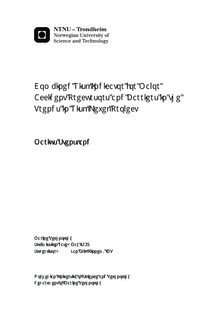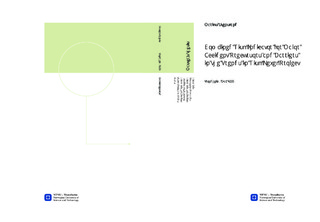| dc.contributor.advisor | Vinnem, Jan Erik | nb_NO |
| dc.contributor.author | Stensland, Marius | nb_NO |
| dc.date.accessioned | 2014-12-19T12:08:54Z | |
| dc.date.available | 2014-12-19T12:08:54Z | |
| dc.date.created | 2013-09-09 | nb_NO |
| dc.date.issued | 2013 | nb_NO |
| dc.identifier | 646719 | nb_NO |
| dc.identifier | ntnudaim:9090 | nb_NO |
| dc.identifier.uri | http://hdl.handle.net/11250/238422 | |
| dc.description.abstract | Since the ?trends in risk level? project first was started, the weights used to estimate the risk level on the Norwegian Continental Shelf has more or less been the same; five sets of generic weights, one for each type of facility, and not facility specific and time dependent. The aim of this master thesis has been to develop a new weight estimation model. The new model estimates time dependent and facility specific weights, based on risk analyses and observed barrier functions? performances. These weights are combined with occurrences of major accident precursors for each facility and then summed up for the entire Norwegian Continental Shelf. This estimates one risk indicator, combining both types of major accident related data reported in the ?trends in risk level? project.The developed model consists of two methods; method 1 and method 2. Both methods use the facility?s QRA and reported barrier functions? performances when estimating new weights. There are however some differences between the two methods.o Method 1 reproduces parts of the risk analysis, but instead of using assumed barrier functions? performances, observed performance is used. Based on the updated risk analysis, weights are estimated.o Method 2 adjusts the risk estimated by the original risk analysis by correction factors based on deviations between the observed barrier functions? performances and benchmark values.Both methods estimate facility specific weights based on barrier functions? performances. Method 1 gives more correct weights, is more time-consuming and requires more information from the available data. Method 2 will be less specific to the facility, as it uses general calibration factors established based on other facilities.The test cases show that method 1 will give good weight estimates and that weights can be estimated by method 2. It can also be seen that the new weight estimates are significantly different from the generic weights and that the estimated weights changes from year to year depending on barrier functions? performances. | nb_NO |
| dc.language | eng | nb_NO |
| dc.publisher | Institutt for marin teknikk | nb_NO |
| dc.title | Combined Risk Indicator for Major Accident Precursors and Barriers in the Trends in Risk Level Project | nb_NO |
| dc.type | Master thesis | nb_NO |
| dc.source.pagenumber | 128 | nb_NO |
| dc.contributor.department | Norges teknisk-naturvitenskapelige universitet, Fakultet for ingeniørvitenskap og teknologi, Institutt for marin teknikk | nb_NO |

